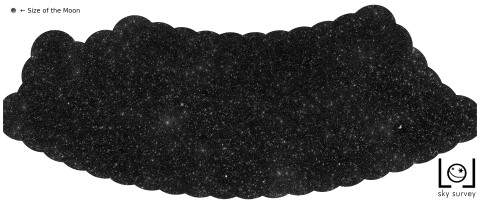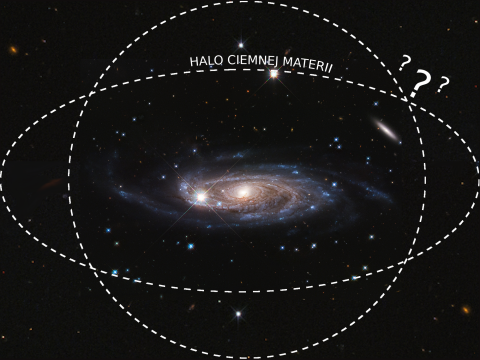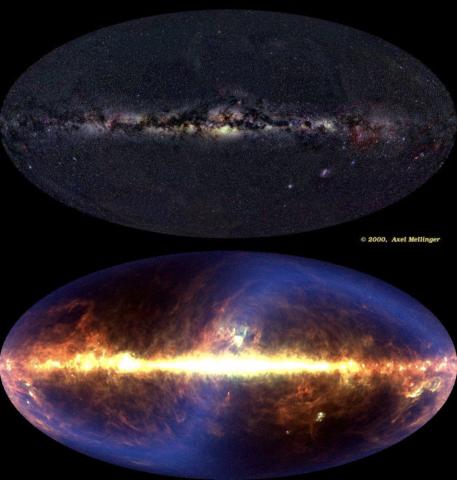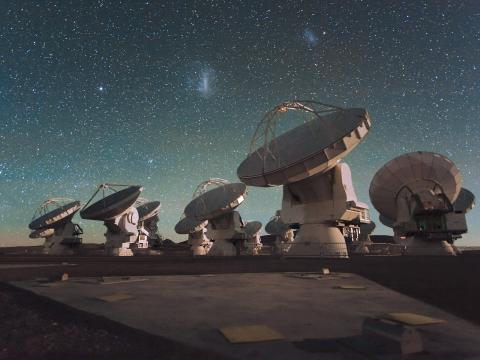
A starry sky made of more than 25,000 supermassive black holes
The map published in the journal Astronomy & Astrophysics reveals more than 25,000 active supermassive black holes in distant galaxies. It is the result of a survey of the sky carried out over radio frequencies. Dr hab. Katarzyna Małek from the NCBJ Astrophysics Division participated in the preparation of the work.

What is the shape of the dark matter halo?
Ph.D. Anna Durkalec from the NCBJ Astrophysics Division belongs to the group of 12 associate professors awarded in the Institute in 2020. Dr. Durkalec begins the description of her research by asking a few questions.

Sudden Death in the Universe - The agony of a massive dusty galaxy as seen by its blue companion
Heavily dust-obscured ultramassive star-forming galaxies in the early Universe contributed significantly to the cosmic star formation rate. But, how did such objects manage to build up their stellar masses at a relatively short time? Were they once starburst galaxies or were they gradually forming stars, exhausting their hydrogen reservoirs?

SONATA BIS: DINGLE - Dust IN Galaxies
Three NCBJ scientists received NCN SONATA BIS grants, which will allow them to build or strengthen their own research groups at the Institute. The project entitled "DINGLE - Dust IN Galaxies: Looking through its Emission" was prepared by Dr. Ambra Nanni from the NCBJ Astrophysics Division. The author explains its assumptions:

Stukając do wrót Pyłowych Gigantów
Międzynarodowy zespół naukowców, w tym dwoje naukowców z NCBJ - Katarzyna Małek i William Pearson - przedstawił dowody na szybki wzrost pyłu w młodych, ale już bogatych w metale galaktykach w odległym Wszechświecie. Badanie, opublikowano właśnie w czasopiśmie Astronomy & Astrophysics.

Top 2% ranking
Stanford University, together with the publishing house Elsevier and SciTech Strategies, has created a ranking of 2% of the best scientists in the world. It contains 159,648 names, including 726 from Polish scientific institutions.




